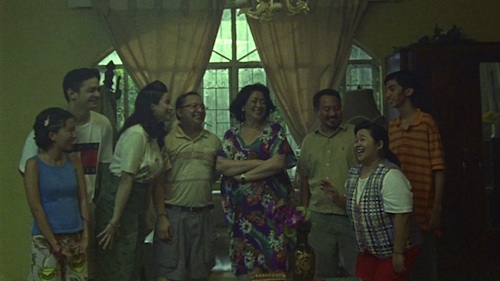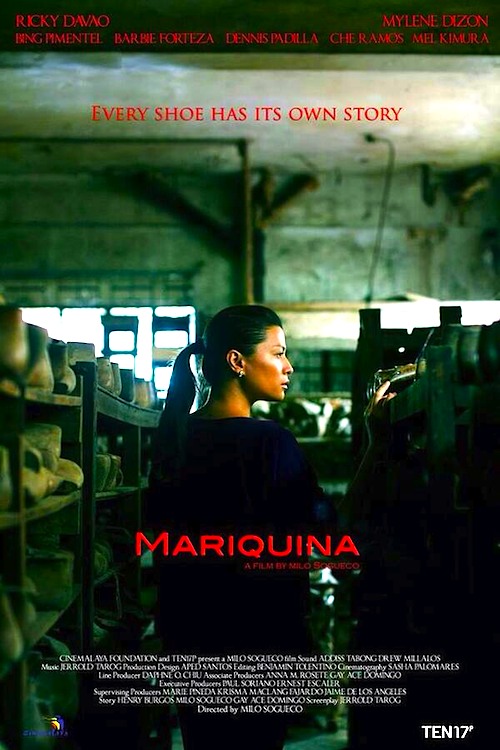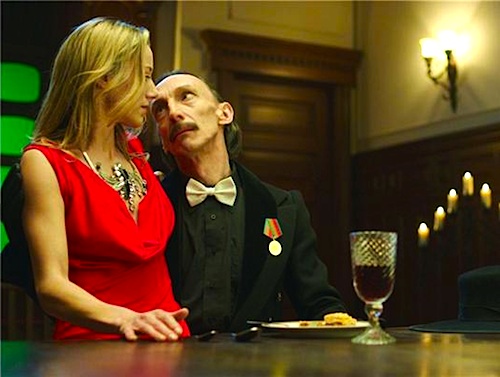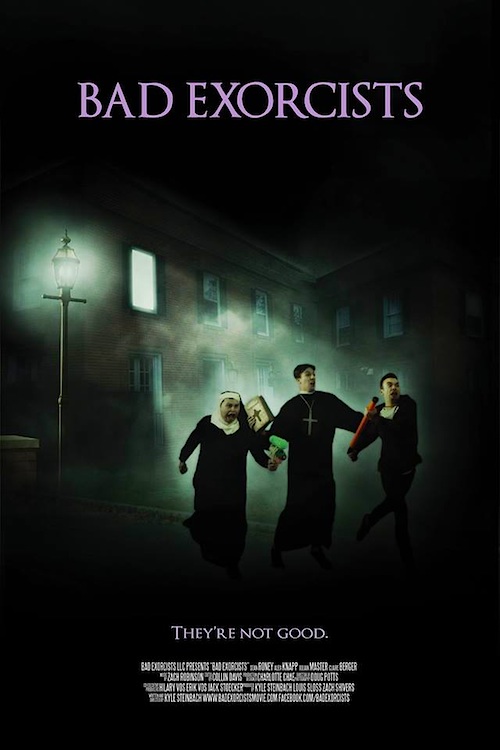By Joe Bendel. Japan and Korea share a lot of complicated history, but recent films too often reduce it all to wartime rebellion and revenge dramas. However, the sleepy village of Gojo is delighted to have Korean visitors and the Korean filmmakers are quite charmed by their hosts. Frankly, they are not precisely sure what they are looking or whether they find it, but they still find their trip rewarding in Jang Kun-jae’s A Midsummer’s Fantasia, which screened during the 2015 Los Angeles Film Festival.
A filmmaker has come to the provincial mountain village of Gojo to research his next film, bringing along his assistant director Mijung to translate. They definitely stand out, but not because they are Korean. Due to economic and demographic factors, nearly all of Gojo’s younger generations have migrated to the big cities, leaving a dwindling elderly population behind. While their stories are somewhat commonplace, the director and Mijung still find them compelling. Perhaps it is just something about their interview subjects’ presence.
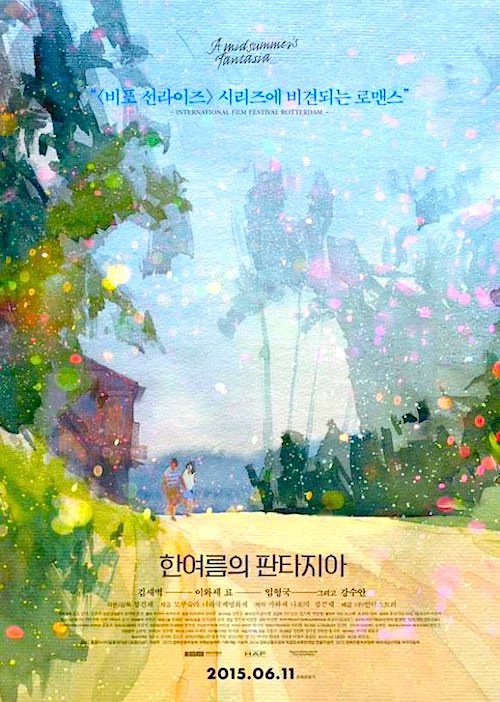 Soon, they meet up with Gojo’s most eligible bachelor: a city official who was once an aspiring actor. He will take them on a special guided tour, impressing the Koreans with his choice of more telling, off-the-beaten-path locales. In fact, it might provide the inspiration the filmmaker is hoping for. The resulting film will probably be Well of Sakura, which also constitutes the second half of Jang’s Fantasia, rendered in color, as a change up from the elegant black-and-white of the first segment.
Soon, they meet up with Gojo’s most eligible bachelor: a city official who was once an aspiring actor. He will take them on a special guided tour, impressing the Koreans with his choice of more telling, off-the-beaten-path locales. In fact, it might provide the inspiration the filmmaker is hoping for. The resulting film will probably be Well of Sakura, which also constitutes the second half of Jang’s Fantasia, rendered in color, as a change up from the elegant black-and-white of the first segment.
Mijung is now a scuffling Korean actress, who has come to Gojo as a tourist, seeking some sort of spiritual detox. A local persimmon farmer offers to serve as her guide after a chance meeting near the station. As they revisit the sites the film director visited, he becomes rather smitten. Unfortunately, despite their undeniable chemistry, Mijung does not feel free to reciprocate his romantic interest. Yet, she does feel something.
With its parallel structure and ships-passing-in-the-night themes, it is easy to liken Fantasia to Hong Sang-soo’s Hill of Freedom. In a way, they are inverse films, with Hong following a Japanese visitor to Korea desperately searching for the ex-girlfriend he never got over. Hill is one of Hong’s better films, so it is a rather apt comparison, regardless of his rep for mannered and precious filmmaking.
It is hard to describe, but Jang completely captures the sense of summer laziness morphing into something more serious. It is a carefully constructed film, but Jang privileges vibe and atmosphere over narrative, which provides quite a supportive platform for his small cast. As Mijung and Mijung, Kim Sae-byuk is simply incredible, managing to be simultaneously sad and seductive, as well as flirty and wise. Ryo Iwase is nearly unrecognizable as her two very different guides, cranking up the romantic yearning in the second half. Although he only appears in the black-and-white sequences, the distinctive maturity and humanism of Lim Hyeong-gook’s director also wears well on viewers.
In a way, Fantasia gives a slightly postmodern twist to the gentle, bittersweet Local Hero style of comedy, in which city folk take the time to smell the roses while temporarily ensconced in a picturesque provincial community. Yet, even with its gamesmanship, Fantasia is unusually fragile and fragrant, lingering pleasantly as a hazy memory after the initial viewing. Recommended for fans of summer breezes and brief but significant romances, A Midsummer’s Fantasia next screens this Sunday (6/14) during the Korean Film Festival at the Freer Gallery in DC (following Hong’s Hill).
LFM GRADE: A-
Posted on June 13th, 2015 at 11:54am.
